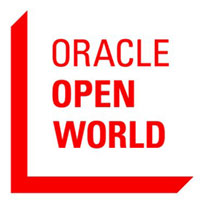Clayton Christensen died last week, and we should care. He was the Harvard Business School professor who wrote The Innovator’s Dilemma and changed the world, certainly the part we inhabit in CRM. He was only 67.
Christensen did more than anyone to plant the idea of disruptive innovation in the minds of people in the tech industry. Before Christensen, we all knew that new companies could overtake entrenched and bigger rivals, but we were happy to write off the change of fortune as bad luck or the murky vicissitudes of the market. Not Clayton Christensen, though.
When I stumbled upon his book decades ago, it was eye-opening. I was a retooled biologist trying to make sense of tech. I knew plenty about evolution. As anyone who studies it knows, the fact of evolution in nature is solid, but its mechanism is hard to identify in action in part because biological evolution happens over such long time spans. That is not the case in business and economics. In our world, change — evolution — happens at a human scale, and the results are brutally apparent.
Understanding Disruption
Christensen was the first person I ever heard of who could identify the actual mechanism of business evolution. It was a disruptive innovation, and it made my career. Shortly after reading his book, I mentioned to a reporter that what would become cloud computing was itself a disruptive innovation and that Salesforce was a primary example of the disruptor.
Salesforce had lots of competition in those days, but it seemed to me that Salesforce was the only company that really understood it wasn’t simply selling CRM through a new delivery mechanism. It was selling both the delivery system and some radical front-office technology that did things others only guessed about.
Salesforce did not disappoint, and it went forward to disrupt CRM and then the entire software industry, as we all discovered. Cloud computing-based CRM had plenty of economic attributes to justify it too. It was less expensive to buy and easier to get up and keep running. That’s still true today, and it’s hard to find a vendor still wedded to the old client-server paradigm — not just in CRM but throughout enterprise software.
Later on, I would call the cloud the ultimate commoditization of IT, but that economic explanation was merely a clarification of what Christensen proved through his fieldwork on companies as diverse as Caterpillar and Digital Equipment Corporation.
Cloud computing was superior as a disruptor because it was more affordable, which made it more consumable. It became something every business could afford, and with it, small, emerging businesses could compete more equally against entrenched competitors.
Suddenly a company’s supply chain, financing, and product differentiators that may have taken years and even decades to build, mattered less than how well a business could reach out to its customers.
All of that made a focus on customers and their success — not revenues, goods sold or any other single instance company-centric measure — the most important value for any business. The cloud brought the idea of subscriptions and recurring revenue. It also brought into play many new ways to measure business success or failure — like the just-mentioned recurring revenue, churn rates and customer lifetime value.
Renewing Capitalism
This economic angle brought me to an understanding of K-waves. A K-wave is a 50- to 60-year economic cycle that begins with a disruptive innovation or a small cluster of them. It percolates throughout a society until it becomes the dominant economic force of an era. In fact, eras are branded by them. Consider the age of steam or the information age we’re all a part of, thanks to the integrated circuit patented in 1959.
Something Christensen and others didn’t account for, though, is that disruptions run their courses. They all studied the exponential growth curve but devoted less attention to managing the downside when commoditization takes hold and industries consolidate. For instance, we no longer live in the age of the steam engine, though steam turbines are still vitally important in generating electricity.
Disruptions commoditize, as we’ve seen in modern IT and cloud computing. It’s so hard to make money building computers today that we’ve offshored their production to low-wage countries, just as we did televisions a couple of generations ago.
Software is in high demand today, but ironically, it is almost free because we generate much of it through automation, and that portion is growing each year. We don’t make money on many technologies today, but we do make it on delivering outcomes.
If you know where to look, new disruptive innovations are on the horizon that threaten the established order and promise huge paydays for innovators. Whether renewable energy, electric cars, water desalination systems, or carbon capture technologies, this tight cluster of technologies is starting a revolution that will dwarf anything Christensen considered or that we’ve seen so far.
In the last 50 years, we’ve elucidated the underpinnings of how capitalism renews itself, and Clay Christensen is one of the few who saw this clearly and explained it to the rest of us. His greatest contribution wasn’t identifying disruption per se; it was demonstrating that disruption is a normal part of life.


























































Social Media
See all Social Media